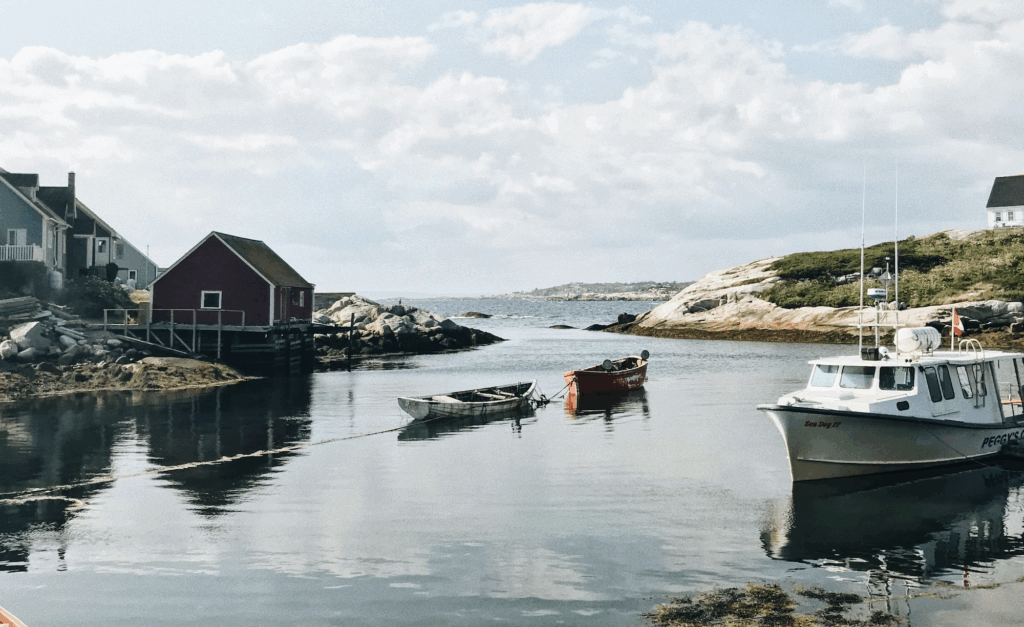A changing investment landscape
In 2025, property investors are navigating a new and more complex landscape. Rising interest rates, tighter lending conditions, and slowing sales in major provinces such as Ontario and British Columbia have shifted the balance of opportunity across Canada. Traditional residential markets, once seen as the default for stable growth, are now showing signs of fatigue. At the same time, an alternative sector is quietly gaining strength: leisure property.
Once viewed as a niche or lifestyle-driven investment, leisure real estate has matured into a credible and resilient asset class. From staycation resorts to golf courses and luxury lodges, these developments are generating consistent income while benefiting from long-term appreciation. For investors seeking both yield and diversification, the sector represents one of the most stable opportunities available today.
Nova Scotia’s quiet surge
Among all Canadian provinces, Nova Scotia stands out as a clear outperformer. While housing transactions in many urban centres have stalled, Nova Scotia’s real estate activity has increased year-on-year. According to the Canadian Real Estate Association, average home prices in the province reached record levels in 2025, climbing over six percent while national averages were flat or declining.
The reason is twofold: affordability and migration. Nova Scotia remains significantly more accessible than major markets such as Vancouver or Toronto, with average property prices roughly 30 to 40 percent lower. This affordability attracts both first-time buyers and investors from other provinces, while the province’s economic stability and scenic appeal make it particularly attractive to remote workers and retirees. The result is sustained demand that supports both residential and leisure developments.
The rise of domestic tourism
The tourism sector has undergone a structural shift that continues to benefit leisure property. The surge in domestic travel, initially driven by pandemic restrictions, has now become a long-term trend. Rising international airfares, environmental awareness, and the convenience of local travel have made staycations the preferred option for many Canadians.
Tourism Nova Scotia reported a double-digit increase in domestic visitor spending last year, with occupancy rates in holiday parks, resorts, and boutique lodges reaching record highs. This has created a powerful feedback loop for investors: higher occupancy drives stronger cash flow, which in turn boosts asset values and reinvestment in local infrastructure.
Leisure property investments also tend to exhibit resilience to global uncertainty. When international travel softens, local destinations often experience increased demand. In this environment, Nova Scotia’s reputation for natural beauty, cultural heritage, and coastal experiences makes it one of the most desirable staycation markets in North America.
Why leisure property delivers stronger returns
Leisure real estate benefits from dual revenue streams. Unlike standard buy-to-let investments that rely solely on long-term tenants, leisure assets produce both rental income and capital growth. Resorts, lodges, and golf communities can operate year-round, drawing from tourism, short-term stays, events, and even residential sales within their developments.
According to market data from comparable resort projects in Atlantic Canada, average gross yields in the leisure sector range between 8 and 12 percent, compared with 4 to 6 percent for standard residential lettings. For investors balancing portfolios in a high-interest environment, that spread can make a significant difference.
Furthermore, the integration of hospitality, retail, and wellness facilities within leisure developments creates resilience. If one revenue stream softens, others can compensate, ensuring consistent returns. This diversification is one of the reasons institutional investors are increasingly looking toward leisure-based assets as a hedge against volatility.
Government support and sustainable development
Public policy has played a quiet but influential role in Nova Scotia’s success. The provincial government continues to invest heavily in transport and infrastructure, improving connectivity and accessibility for both residents and tourists. Highway upgrades, regional airport expansions, and ferry service enhancements have all supported tourism growth.
Equally important is the province’s commitment to sustainability. Nova Scotia has set ambitious renewable energy targets and introduced incentives for eco-friendly construction. For leisure developers, this opens opportunities to integrate green technology, from solar energy systems to environmentally conscious water management. Properties that meet these standards are increasingly preferred by both guests and institutional investors, who view ESG alignment as a sign of long-term viability.
Primefield’s focus on leisure resorts and golf developments aligns directly with this agenda, ensuring that projects contribute to both economic growth and environmental responsibility.
A shift in lifestyle and working patterns
Another factor driving leisure investment is the evolution of work itself. Remote and hybrid working arrangements have made it possible for professionals to live outside major cities while maintaining urban incomes. As a result, demand for high-quality lifestyle property has increased. Buyers are no longer looking solely for holiday homes but for spaces that balance work, leisure, and long-term living potential.
This shift has blurred the line between residential and resort development. Properties that offer strong Wi-Fi, good transport access, and high-quality leisure amenities can serve dual purposes: short-term vacation use and longer-term residential rental. Nova Scotia’s combination of natural landscapes, connectivity, and affordability makes it uniquely positioned to capitalise on this shift.
Resilience through diversification
In any uncertain economic period, diversification remains the foundation of risk management. Leisure property offers exposure to multiple sectors at once: real estate, tourism, and hospitality. This built-in diversification is what makes it so valuable for investors seeking consistent performance across cycles.
For example, golf resorts now integrate year-round tourism, membership models, and residential communities. Holiday parks are evolving into multi-use leisure destinations with restaurants, retail, and spa facilities. Each of these income sources enhances resilience, reducing reliance on a single market driver. For long-term investors, it creates a balance between cash flow and appreciation that few other asset classes can match.
Investor outlook for 2025 and beyond
The next several years are expected to reinforce the strength of leisure real estate. As Canada continues to experience interprovincial migration and a focus on local experiences, demand for high-quality leisure property should remain strong.
Analysts forecast that Nova Scotia’s property values will rise between four and eight percent through 2026, with resorts and leisure assets outperforming the wider market. Tourism is projected to contribute more than $3 billion annually to the provincial economy by 2030, supported by infrastructure and digital connectivity investments that extend to even the most rural coastal areas.
For private investors and institutional funds alike, this combination of growth, stability, and affordability represents an appealing opportunity. The key lies in identifying developments that are well managed, sustainably built, and strategically located in high-demand leisure regions.
A proven opportunity for long-term value
Leisure property has moved far beyond its image as a lifestyle indulgence. It is now one of the most balanced and future-proofed segments of Canadian real estate, offering solid income, tangible assets, and alignment with broader cultural and environmental trends.
Nova Scotia exemplifies this evolution. With steady tourism growth, strong policy support, and infrastructure designed for long-term economic expansion, it provides a foundation for sustained investor confidence.
For those seeking diversification, reliable yields, and meaningful long-term value, leisure property in Nova Scotia remains one of the most compelling opportunities in 2025.
To explore current investment opportunities in leisure property, contact Primefield today.





